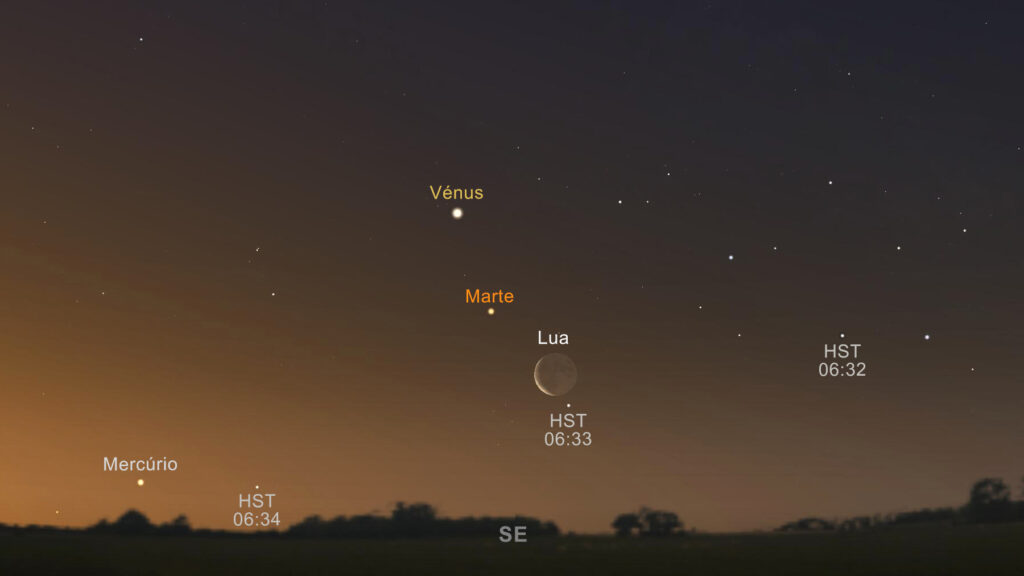As of early February, the planet Jupiter still faces west at dusk, but is getting closer and closer to the Sun in the sky.
At the end of the month, it begins to cross our star and stops being seen for a few weeks, reappearing at dawn, towards the end of March.
So in February, observing the planets will be more of an early riser activity, with Mercury, Venus and Mars all visible at dawn.
At the beginning of the month, Venus and Mars are almost 9 degrees apart, but they get closer and closer during this month, until the March 12 conjunction, when they will be within 4 degrees of each other.
Mercury, on the other hand, is the most difficult to see of the three, because it never strays far from the Sun in the sky, and therefore it is always seen close to the horizon.
But the month started with a new moon on the 1st. The next day, a very thin crescent passes 5 degrees from the planet Jupiter, at sunset.
Dawn on the 8th will be the best time to see Mercury, as it is the day when it will be furthest from the Sun.
Even so, don't expect to see it “up there” – it will be at most 8 degrees above the horizon, when the brightness of the rising sun dazzles you. On this same day, the Moon reaches its first quarter phase.

The 9th will be the day when the “superstar” that is the planet Venus will be brightest all year.
A week later, on the 16th, the Moon reaches the full moon phase, while the 23rd will be the day when Venus is furthest from the Sun in the sky, and therefore highest in the sky at dawn. On the same day, the Moon reaches its waning quarter.
Just before dawn on the 27th, the observation challenge of the month: around 6:33 am, the Hubble Space Telescope (HST) will pass under the moon, already in a very small wane!
According to the page Heaven Above, which predicts when certain satellites will pass us “over our heads”, the HST begins its passage at 06:25:37, facing southwest and sets at 06:35:34, east-southeast (ESE) .
But just above the Moon are the planets Mars and Venus, practically aligned with our satellite, with the Moon at 3 degrees from Mars and 8 degrees from Venus.
That is, at around 6:33 you can see, from the bottom up and practically aligned, the Hubble Space Telescope, the Moon, Mars and Venus.
But the challenge doesn't end here! Mercury is to the left of this quartet, but if the Moon at this time is 8,5 degrees above the horizon, Mercury will only be 2,5 degrees above the horizon!
You can try to observe it following the trajectory of the HST, because at 06:34:50 it will be at the same height as Mercury, but 6 degrees to the right of the planet.
As for the old HST, after decades of unparalleled discoveries, his days are numbered. Its replacement, the James Webb Space Telescope (JWST), has already arrived at the place from where it will observe the Universe and is estimated to start operating in full by June.
Closing the month, on the 28th, the Moon, which moves approximately one hand a day across the sky, will pass at about 8 degrees of Mercury, just before the Sun rises.
Good observations.
Author Ricardo Cardoso Reis (Porto Planetarium and Institute of Astrophysics and Space Sciences)





















Comments